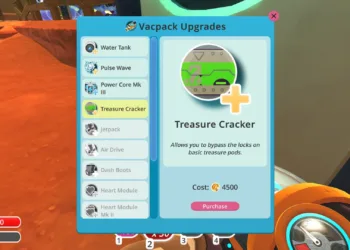Fast Food Simulator places you in the role of a fast-food restaurant manager, requiring you to handle everything from taking orders to cooking and serving food. As you progress through the game, you can unlock new ingredients and hire staff to make your tasks easier.
The game can quickly become hectic if you don’t make the right choices, so it’s crucial to have a strategy before jumping in. Here are some beginner tips that will help you get started and make your restaurant experience more enjoyable.
You Have All the Time You Need to Prepare
Before you open for business, time is on your side. The clock remains at 9 AM, allowing you to get ready without any rush. Take this opportunity to order ingredients, organize them, and complete any time-consuming tasks that would be tough to manage once customers arrive.
A smart strategy is to cook a good number of beef patties in advance, as they take a while to prepare and require constant attention to avoid burning or undercooking. Having enough patties ready before opening will help you fulfill orders in seconds.
Tip: If you finish the day with extra cooked patties, it’s better to toss them rather than risk losing a customer by serving late.
Don’t Hesitate to Order More Than You Need
Before opening, feel free to order as much food as your budget allows. Ensure you have not only what you need for the day, but also anything unlocked in the market.
Any excess ingredients can be stored on shelves. Perishable items like vegetables and patties can be kept in the fridge or cold storage. Remember, once you unlock an ingredient, order it right away; you’ll start receiving requests for it the very next day, whether you have it or not.
Tip: If a last-minute order comes in for something you don’t have, you can still buy it through the Market app, but it’s always better to prep ahead of time to save crucial seconds during the rush.
Hire Staff as Soon as Possible
You can hire a server and a busser for a nominal cost. The server picks up dishes and brings them to customers, while the busser handles payments and keeps tables clean. For just around $60 for both workers for the day, their assistance becomes vital as your restaurant grows and orders become more complex. This allows you to concentrate on cooking without the distraction of serving tables.
Note: Don’t forget to place the receipt and food on a tray before marking the dish as complete; your server will automatically serve it to the correct table.
Keep an Eye on the Screens
There are screens positioned around the cooking stations, and it’s essential to check them regularly. As you advance and the orders get more intricate, it’s easy to overlook ingredients.
By frequently glancing at the screens, you’ll remember what each order entails and which table it belongs to. This habit is especially helpful when you’re managing multiple orders at once.
Prepare a Few Simple Orders Before the Day Starts
As you get used to the game, it’s wise to have a couple of simple orders ready before opening for the day. You’ll begin noticing common requests from customers, and having those on hand will lessen your workload.
At higher difficulty levels, managing customer orders can be quite a challenge, so having basic items ready will allow you to focus on fulfilling other requests, ensuring satisfied customers.
Tip: Prepped orders don’t have to be just burgers; preparing drinks in advance can also help you keep up with demand.
Don’t Overextend Yourself
In the kitchen, take your time and avoid rushing. For instance, when cooking beef patties, limit yourself to six at a time to prevent burning. Cooking more than the cooking tray can hold will lead to overcooked patties.
If you’re busy with several orders, don’t hesitate to cancel new requests. Cancelling isn’t as impactful as serving the wrong item and will help you maintain focus.
Clean the Kitchen Before Closing
Before you wrap up for the day, it’s vital to clean the kitchen. Make sure all ingredients and uncooked patties are placed in the fridge. Likewise, any trays your busser has collected should be organized under the counter.
These simple steps help prevent food waste, saving you money. Leaving items out overnight means losing them by morning, and that includes condiments like ketchup and mayo, which should also be refrigerated after use.
Don’t Dwell on Mistakes
In the fast-paced environment of the game, it’s easy to feel overwhelmed, especially with increased difficulty. Stay calm and don’t let a single wrong order derail your progress. Customers might still accept slightly imperfect patties, so focus on the next order instead.
You can refer to the receipt on trays to confirm details before marking an order complete. Additionally, a label system can help you keep track of which burger belongs to which order. Make it a habit to double-check to avoid confusion.
By following these tips, you can efficiently manage your fast-food restaurant and keep your customers happy!












